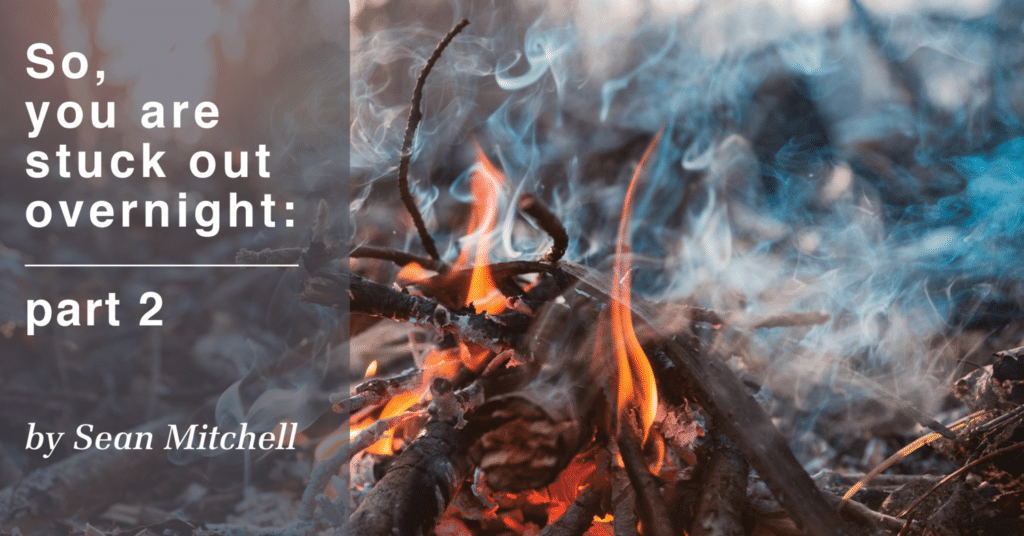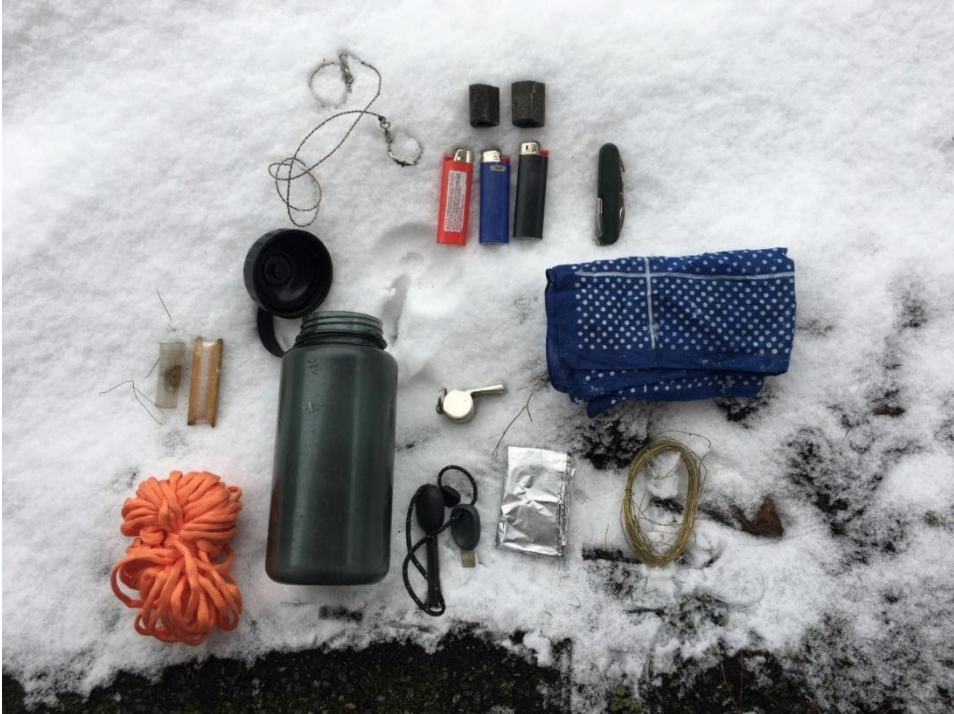
By Sean Mitchell
“The myriad jingle-jangle gadgets of some of our modern outdoorsmen would make our ancestral buckskin men turn in their graves. Their packs were light and their equipment meager, for these adventurous and picturesque wilderness men depended upon their skill and ingenuity in woodcraft rather than upon a lot of ‘things’.” (from Jaeger, E. 1945. Wildwood Wisdom).
This quote, though dated and some would consider quaint, is from 1945 — a time not noted for people going out into the woods with a lot of gimmicks. Three quarters of a century on, as we wander through a store or scroll through a website, we can be overwhelmed with the gadgets and knick-knacks available to us, each telling us they are necessary to our outdoor experience. We have become a society that thinks if we have enough “stuff” we will be safe. Many of the modern widgets however, are single-purpose, intended by the manufacturer to fill a specific and narrow niche. This runs counter to the types of tools we need if in an emergency situation. We do not want to carry a lot of tools that perform only a single function, but rather multi-purpose tools so that we can accomplish many tasks with only a handful of items.
Our tools are important, they must allow us to create a fire, build a shelter, and signal to searchers. The selected items should be what you need in your environment; I discourage people from buying stock survival kits. Commercially available kits are frequently designed by someone sitting in an office and mass produced in a factory. Your needs when stuck overnight cannot be foreseen or anticipated in that process. You need to think about your needs, for your environment, based upon your knowledge and experience. For example, I began my career in north-central British Columbia, in a country of significant winters with snow and cold extending through four or five months of the year. That is what informed my survival kit and that approach, being aware of what I need through the coldest periods and longest nights of darkness, still guides my choices. That is my likely worst-case scenario. I would like to walk you through the basics of my kit, simply to illustrate a personalized kit and how every item has a well thought out purpose.

There is not much to it, but every item has one or more specific purposes that makes me want to be sure I never leave this simple kit at home.
1. Robust waterproof container:
This not only keeps my kit dry in the event of submersion, itself a valuable reason, but the empty bottle also is my drinking vessel making it easy to remain hydrated and to carry water through the day. This container must be robust to take the years of jostling in your pack before that night when you are in critical need of it.
2. Fire-lighting ability:
I carry three lighters, two forms of tinder (only one shown here), and one backup — flint and steel — to create sparks in the event the lighters don’t work. A fire is an absolute essential if stuck out overnight in cold or inclement weather*, so I build redundancy in for this critical task. The tinder shown is rolled up newspaper soaked in used motor oil then cut into short lengths once dried; not environmentally sensitive I admit but I made these 30 years ago and they will still take a flame under the worst conditions. My secondary tinder is a cotton batting thoroughly coated with Vaseline; this burns well and is waterproof. I keep this in a zip-lock bag in the kit.
3. Cutting devices:
In my kit I have a small knife. However, I also carry a pocket knife of longer blade; this small knife is a back-up in the event I lose or break my primary knife. The second cutting device is a wire saw. If I need to keep a fire going through a night, or worse, for several days, I need a method of cutting larger material that will burn more slowly and much hotter. Wood more than a couple centimetres in diameter is beyond the ability of a knife; to cut those larger branches and boles of ten or fifteen centimetres requires a saw. Hence the wire saw.
4. Methods to tie materials together:
One does not realize how often we tie things together until they don’t have any rope. It is much easier to build a lean-to if you can lash poles together; need a splint for an injured finger – you need a way of tying it on; want to hang something… some string or rope allows this. For this reason I carry various materials to tie things. A length of rope explicitly for that, but my fishing line and snare wire also allow me to tie things and these are general purpose as well as I can use them for snaring or fishing if necessary.
5. Signalling device:
Because my experience is primarily in the forest I do not carry a signalling mirror. Such a mirror is very valuable in country of open sightlines and if I did a lot of work along coasts, in open arid areas, or tundra, it would certainly be in my kit. But for closed forests which are more typical for me I carry a whistle. Voices carry very poorly in forests where the trees break up the sound, and so I could shout myself hoarse and only have a very short effective range of signalling to people looking for me. A whistle, on the other hand, expands that auditory range by two or three times. Recognizing I choose not to carry a signalling mirror, I have a strategy in the event I am stuck in country of open sightlines. Searchers are typically looking for signs of people, including fires and smoke. So, since I am going to have a fire going the entire time I am out, I keep material nearby to make either a smoky fire (leaves, lichens, mosses, etc.) or quickly increase the size of fire (small material that quickly takes lights and builds the fire up rapidly, increasing visibility from a distance). I still want to be able to signal over distance, just without a signal mirror.
6. Lightweight general-purpose materials:
I carry a small piece of aluminum foil knowing I can use it to create a heat reflector and so increase the efficiency of the fire. It could also, in principle, hold water if I needed to. The handkerchief is to hold items I may pick up and want to wrap and store safely (such my fire-lighting equipment) and to keep at least a little bit clean by being able to wash my hands and face. Could also act as a bandage.
7. Activities to remain busy:
These items mentioned also provide me some tools to remain busy and help to deal with the fear and boredom discussed in So you are stuck out overnight: part 1. I can set snares and set-lines for fish. I can use the handkerchief or parts of it to make a small bag or patch clothes or equipment. The intention here is not to catch game or fish, or to make something I need – it is to remain busy and productive.
Of particular note is that building such a kit is only worthwhile if you carry it with you every time you go out. Every time. No exceptions. So it has to be small, compact, and lightweight, so that it is not a burden. Whether it has its own pocket in your pack, or simply stays in the bottom of the bag with other gear piled on top of it, as is mine, is irrelevant. But it must be in the bag.
With these tools, and my previously discussed mental preparation, every time I go out into the forest I am ready to be stuck out overnight. Will I like it and enjoy it? Probably not, but I will return home again. I will rely on myself rather than “the myriad jingle jangle gadgets”.
* If you need a reminder of this, just read Jack London’s famous short story “To Build a Fire”.







